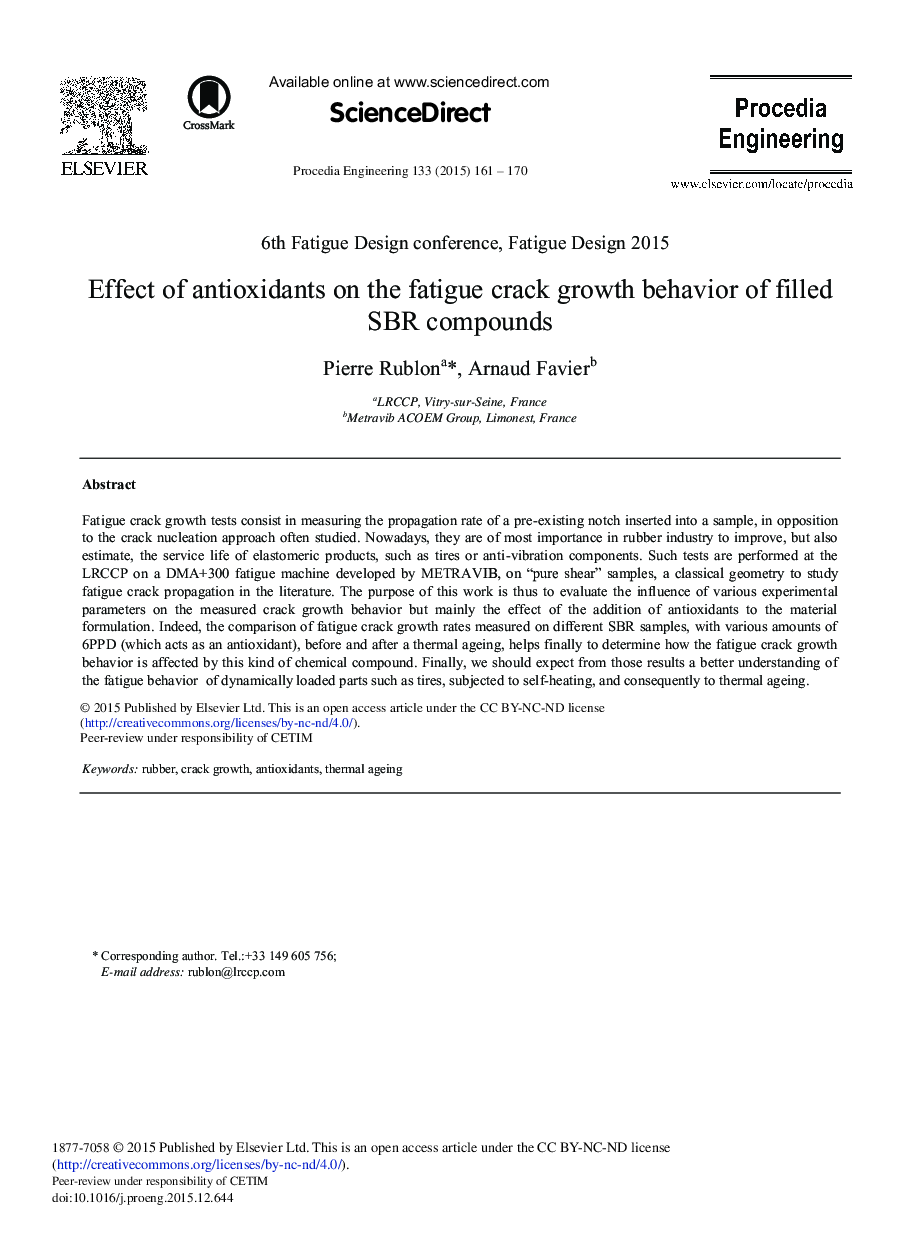| Article ID | Journal | Published Year | Pages | File Type |
|---|---|---|---|---|
| 853929 | Procedia Engineering | 2015 | 10 Pages |
Fatigue crack growth tests consist in measuring the propagation rate of a pre-existing notch inserted into a sample, in opposition to the crack nucleation approach often studied. Nowadays, they are of most importance in rubber industry to improve, but also estimate, the service life of elastomeric products, such as tires or anti-vibration components. Such tests are performed at the LRCCP on a DMA+300 fatigue machine developed by METRAVIB, on “pure shear” samples, a classical geometry to study fatigue crack propagation in the literature. The purpose of this work is thus to evaluate the influence of various experimental parameters on the measured crack growth behavior but mainly the effect of the addition of antioxidants to the material formulation. Indeed, the comparison of fatigue crack growth rates measured on different SBR samples, with various amounts of 6PPD (which acts as an antioxidant), before and after a thermal ageing, helps finally to determine how the fatigue crack growth behavior is affected by this kind of chemical compound. Finally, we should expect from those results a better understanding of the fatigue behavior of dynamically loaded parts such as tires, subjected to self-heating, and consequently to thermal ageing.
